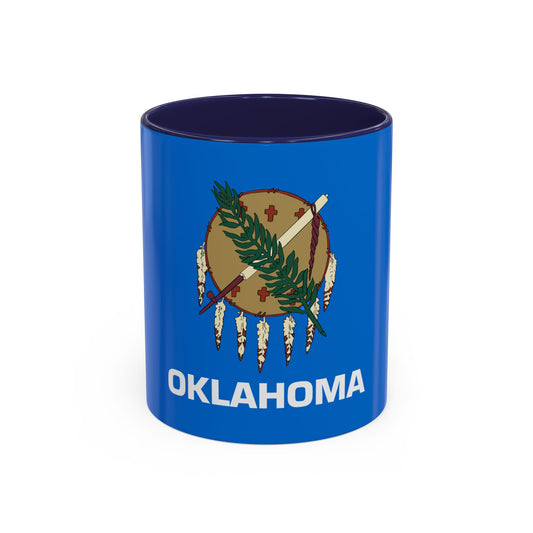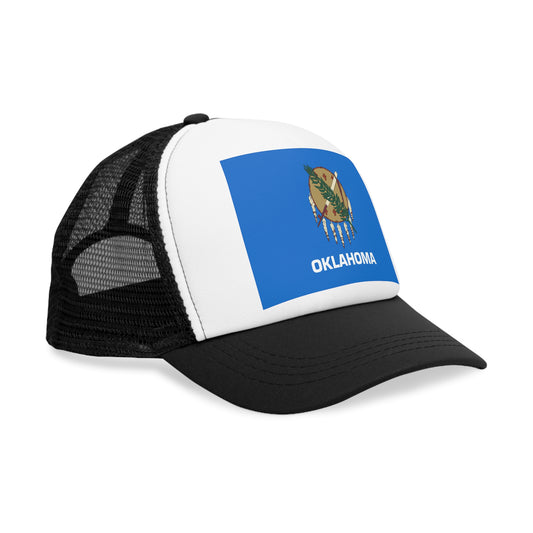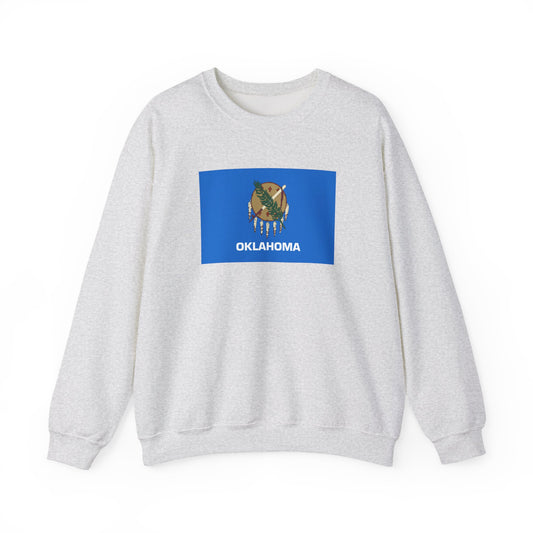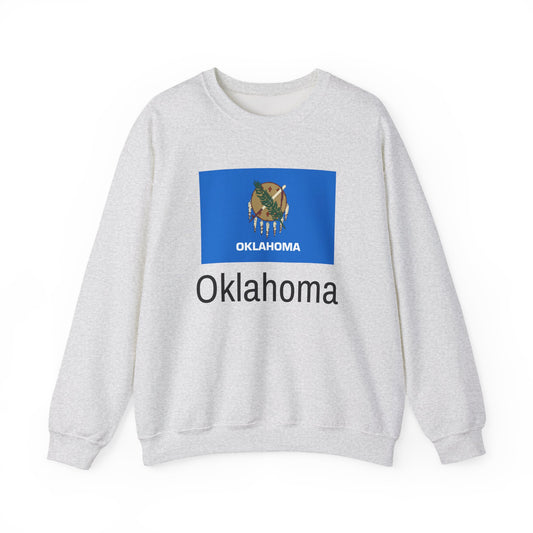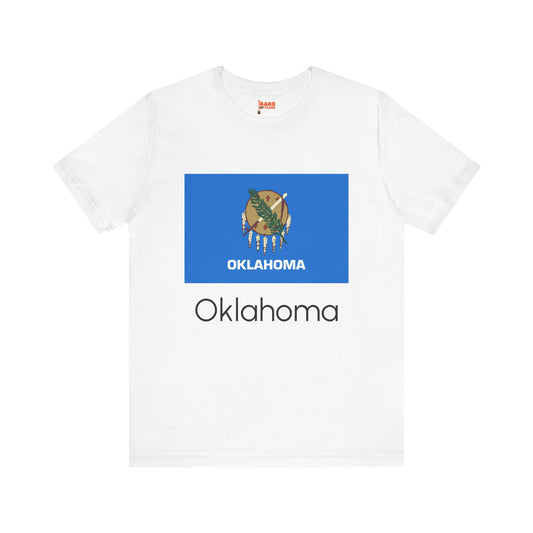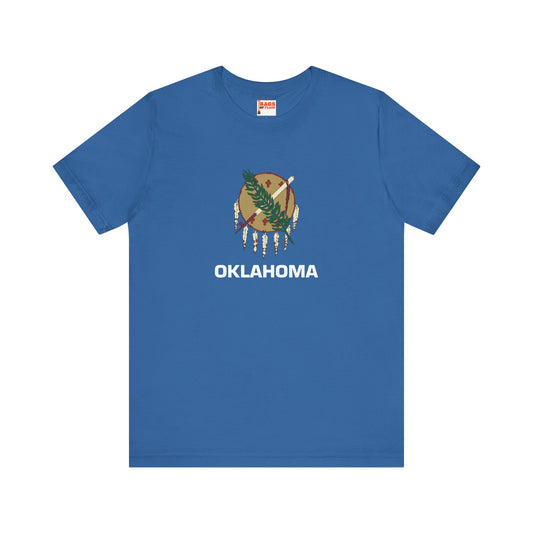-
Oklahoma Pillow
Regular price $22.65 USDRegular priceUnit price / per -
Oklahoma Mug
Regular price $11.65 USDRegular priceUnit price / per -
Oklahoma Trucker Cap
Regular price $14.90 USDRegular priceUnit price / per -
Oklahoma Leather Patch Hat
Regular price $18.85 USDRegular priceUnit price / per -
Oklahoma Backpack
Regular price $59.79 USDRegular priceUnit price / per -
Oklahoma Inspired Sweatshirt
Regular price $34.15 USDRegular priceUnit price / per -
Oklahoma Flag Sweatshirt
Regular price $34.15 USDRegular priceUnit price / per -
Oklahoma Sweatshirt
Regular price $34.15 USDRegular priceUnit price / per -
Oklahoma Hoodies
Regular price $34.40 USDRegular priceUnit price / per -
Oklahoma T-shirts
Regular price $22.79 USDRegular priceUnit price / per -
Oklahoma Flag Hoodies
Regular price $34.40 USDRegular priceUnit price / per -
Oklahoma Inspired Hoodie
Regular price $34.40 USDRegular priceUnit price / per -
Oklahoma Inspired T-shirt
Regular price $22.79 USDRegular priceUnit price / per -
Oklahoma Flag T-shirts
Regular price $22.79 USDRegular priceUnit price / per
Collection: US State: Oklahoma OK flag
The Oklahoma flag is a symbol of pride and heritage for the state's residents. Its design and colors hold special significance, representing the state's history and values. We will delve into the unique facts and secrets surrounding the Oklahoma flag, exploring its origins, symbolism, and current relevance.
Overview of the Oklahoma Flag

The flag of Oklahoma is a striking symbol of the state’s heritage, marked by a deep blue backdrop that cradles a traditional Osage Nation buffalo skin shield, which is central to the flag's design. Seven eagle feathers adorn the shield, each meticulously rendered to signify honor and strength. Directly below the shield, the state's name is inscribed in bold, white lettering, representing identity and pride. The blue background serves as a canvas for the flag’s elements and signifies devotion.
Each component of the flag’s design has been carefully chosen to encapsulate Oklahoma's spirit and values. It weaves together a narrative of loyalty, protection, and respect for the state's Native American roots and their contribution to its rich tapestry. This symbolic representation fosters a sense of unity and remembrance among Oklahomans, symbolizing the enduring legacy and vibrant cultures that thrive within the state.
Historical Context of the Flag
The journey of the Oklahoma flag began in the early 20th century when the state sought to forge its identity and unify its diverse population. Before adopting the current flag in 1925, Oklahoma used a simpler red field with a white star in the center, which contained the number "46," signifying Oklahoma as the 46th state to join the Union. This original design, however, became associated with communism and the red flag used by socialists, prompting a reconsideration of the state's emblem.
The shift towards a new flag was propelled by a desire to represent Oklahoma's rich Native American heritage and its aspirations as a state. The Daughters of the American Revolution played a pivotal role in this transition, sponsoring a contest that invited citizens to design a flag that would encapsulate the spirit and values of Oklahoma. Mrs. Louise Fluke's winning design, featuring the Osage Nation buffalo skin shield, was officially adopted on April 2, 1925. This marked a significant moment in Oklahoma's history, as the state moved away from symbols that could divide its people towards one that celebrated the unity and diversity of its culture. Introducing the new flag design was a deliberate effort to create a symbol that could stand the test of time and foster a sense of pride and belonging among all Oklahomans.
Symbolism in the Flag's Design
At the heart of the Oklahoma flag's design is a rich tapestry of symbolism that celebrates the state's heritage and values. The central feature, an Osage Nation buffalo-skin shield, is a direct nod to the indigenous communities that have long thrived in the region. This element honors their traditions, resilience, and their integral role in Oklahoma's story. Surrounding the shield, the seven eagle feathers, symbols of honor and strength among many Native American tribes, highlight the state's deep respect for the Native American culture and the virtues it upholds.
Including the state's name directly below the shield asserts a sense of identity and pride, grounding the flag in the present, deeply entwined with its past. The blue field not only pays homage to the sky and the tribes but also represents loyalty and perseverance. These elements weave a visual narrative testament to Oklahoma's enduring spirit and a beacon of its diverse and unified community ethos.
Current Relevance of the Oklahoma Flag
Today, the Oklahoma flag holds a place of honor in both public and private spaces throughout the state, symbolizing not only its past but also its vibrant contemporary identity. It is common at various gatherings, from local community events to state-wide celebrations, illustrating the pride of Oklahomans in their unique heritage. In military contexts, the flag represents the state's serving sons and daughters, connecting them to their roots.
Additionally, the flag is central in educational settings, where it serves as a tool for teaching the state’s history and the values it stands for. Despite its widespread acceptance and use, the flag occasionally sparks debate over its design and symbolism, reflecting the evolving dialogue about what it means to be an Oklahoman in the modern era. These discussions highlight the dynamic relationship between the flag and the people it represents, underscoring the ongoing relevance of its symbols and the narratives they convey in today's society.
Additional Facts and Protocols for the Oklahoma Flag
When it comes to the proper etiquette surrounding the display and treatment of the Oklahoma flag, several guidelines ensure its dignified presentation. These include positioning the flag in a place of prominence when displayed alongside other flags, except that it should never be positioned higher than the U.S. flag unless state law mandates it during specific state ceremonies or events. When flown with the national flag, the Oklahoma flag should be of equal or smaller size and placed to the observer's left when placed side by side.
The flag should be illuminated if flown at night and never displayed in inclement weather unless it is an all-weather flag. Furthermore, the Oklahoma flag should be folded respectfully and stored securely when not in use, ensuring that it does not touch the ground or any objects beneath it during the raising or lowering process.
An intriguing protocol regarding the Oklahoma flag pertains to its half-staff position. The governor may order the flag to be flown at half-staff to mark periods of mourning or in remembrance of significant figures in the state's history, reflecting the state's collective homage and respect.
A lesser-known fact about the Oklahoma flag is its initial design concept, which included a Native American warrior on horseback symbolizing the state's Indigenous heritage. This concept evolved into the current design featuring the Osage Nation buffalo skin shield, a change made to embrace a broader representation of Oklahoma's Native American communities and foster unity among its diverse population.




